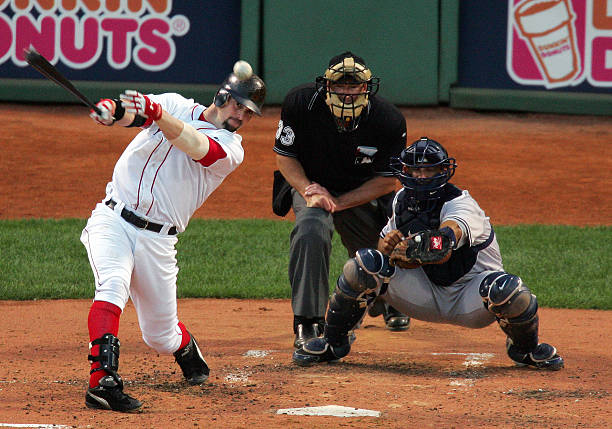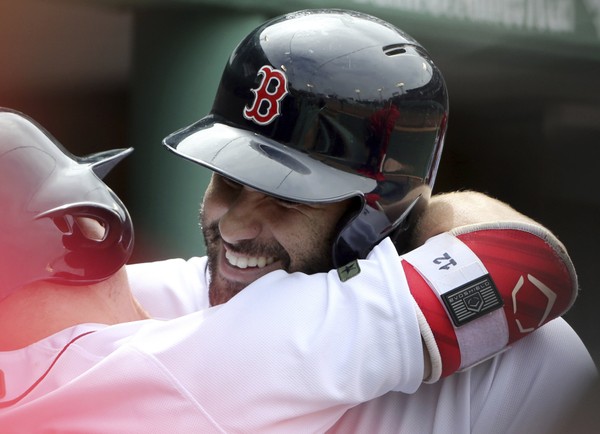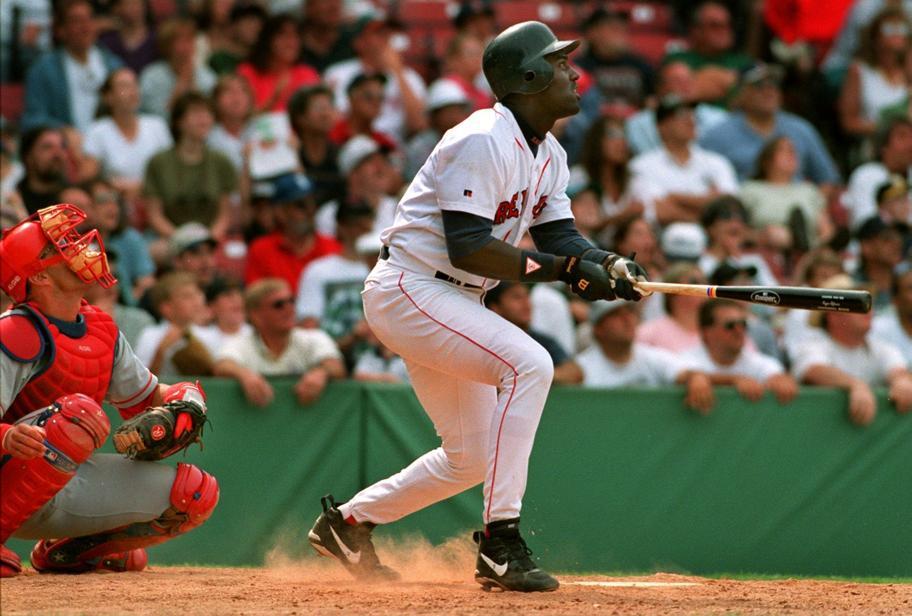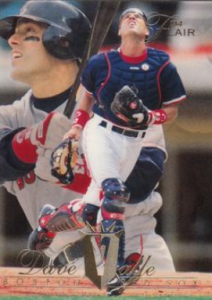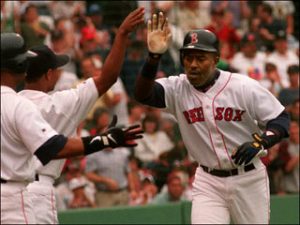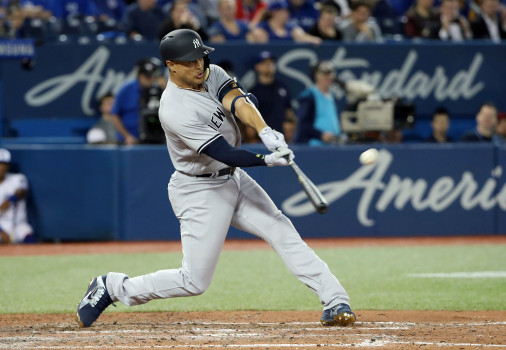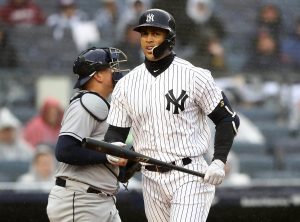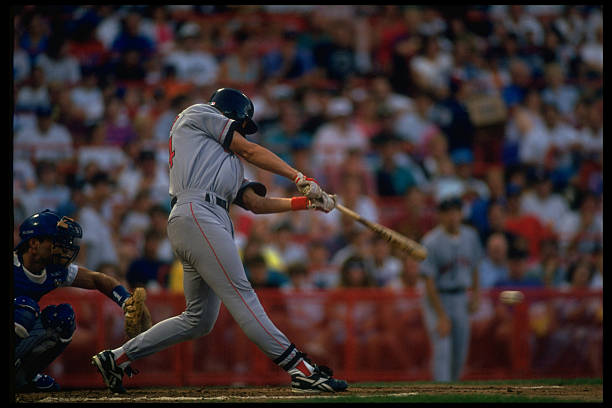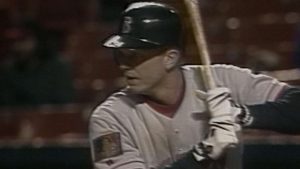On Friday, July 15, 2005, the Red Sox and Yankees met for the second of a four game series at Fenway Park. This was the first series after the All-Star break and the Yankees had taken the first game to move within 1.5 games of the Sox for first place in the East. Through nine games, the Red Sox had gone 5-4 in their season series. Among the wins was a 17-1 victory at Yankee Stadium in late May.
Taking the Field
The Red Sox sent former Yankee David Wells to the mound. Wells was in his first season with Boston and just a year removed from his second stint with the Yankees. He had pitched twice versus New York already on the season, going 1-1. For New York, newcomer Tim Redding would take the hill. The Yankees had just acquired Redding along with Darrell May from the Padres for Paul Quantrill. Redding was 0-5 with an unsightly 9.10 ERA while pitching in the National League West.
Wells cruised through the top half of the first, striking out Derek Jeter and Robinson Canon before getting Gary Sheffield to fly out. Johnny Damon was the Red Sox leadoff hitter and singled to right to open up the home half of the first. Edgar Renteria walked before Tim Redding surprisingly struck out David Ortiz and Manny Ramirez back-to-back. With two outs, Trot Nixon doubled home both Damon and Renteria to put the Red Sox on the board first. After a Kevin Millar walk, Jason Varitek doubled and the Red Sox were ahead 3-0.
Sox Chase Redding
After another 1-2-3 inning for Wells, the Red Sox offense went back to work. Mark Bellhorn and Johnny Damon walked followed by a single by Edgar Renteria to load the bases. Just like that, Redding’s night was over, as was his Yankees career. Redding never threw another pitch for the Yankees, getting just three outs. In came Darrell May, their other recent acquisition from the Padres. The left-hander fared a little better, if only marginally so. A run came home on a fielder’s choice. Manny Ramirez followed with a double to left to score the Red Sox fifth run of the night. Trot Nixon, in the play of the night, hit a fly ball to center that seemed to tail some. Melky Cabrera, coming in for the play missed the ball as it glanced off his glove. Trot kept running as the ball rolled well past Cabrera and came around to score with a three-run inside-the-park home run! The Red Sox were up 8-0 and it was only the second inning. Tim Redding allowed six runs while only recording three outs in his only appearance for the Yankees.
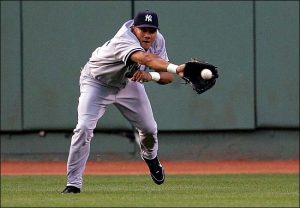
Melky Cabrera misses Trot Nixon’s fly ball, leading to an inside-the-park home run.
Red Sox Chase Another Yankee Acquisition
The Red Sox got another run in the third when Edgar Renteria drove home Johnny Damon. In the top of the 4th, the Yankees got their first hit off their old buddy on a ground ball into center by Robinson Cano. After a wild pitch moved him to second, Gary Sheffield drove him home with another hit. Wells would get Alex Rodriguez to hit into a double play and Hideki Matsui to ground out to end the inning. The Yankees had scored a run, good for them.
In the bottom of the inning, the Sox got two men on via walk with two outs. Bill Mueller doubled to left to drive home Kevin Millar with the Sox’ 10th run. After another walk, Johnny Damon doubled home two more runs to chase Darrell May from the game. May had equaled Tim Redding’s six runs allowed, although at least he had gotten eight batters out to Redding’s three. This was May’s second outing as a Yankee, having allowed seven runs six days prior against the Indians. Just like Redding, this would be his final outing with the Yankees. The Yankees two recent trade acquisitions pitched a combined three games for the Yankees, allowing 19 runs over eight innings. May never pitched in the big leagues again.
A Grand Slam
The Yankees found some semblance of competency with Jason Anderson, who enjoyed a 1-2-3 fifth inning after recording the final out of the fourth. Meanwhile, David Wells kept cruising along, allowing just one hit between the fifth and sixth.
Anderson did not seem up for another inning of work however. Kevin Millar led off with a double before Anderson walked Varitek. Alex Cora then pinch-hit for Bill Mueller and singled to load the bases. Anderson actually got two outs after that without allowing a run to come in. Close to getting out of the jam, Anderson walked Edgar Renteria to bring home the Red Sox’ 13th run of the game. That was the end of Anderson’s night. With David Ortiz due up, the Yankees brought in long-time lefty specialist Buddy Groom. With two outs and the bases loaded, Ortiz took an 0-1 offering from Groom deep to right and over the fence for a grand slam. So much for the lefty specialist, the Red Sox now led 17-1.
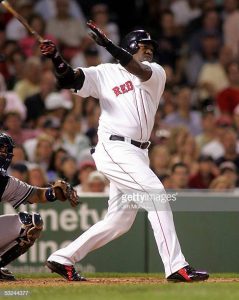
David Ortiz follows through on his grand slam off pitcher Buddy Groom in the sixth inning at Fenway Park on July 15, 2005. (Photo by Jim McIsaac/Getty Images)
Yankees Get Embarrassed
The rest of the game was uneventful. Buddy Groom wound up pitching a shutout seventh after allowing the grand slam. For the Red Sox, David Wells went seven innings allowing just one run to improve to 7-5 on the season. John Halama had a perfect eighth followed by Geremi Gonzalez bringing home the huge victory with a perfect ninth. For the second time on the season, the Red Sox had beaten the Yankees by a score of 17-1. Trot Nixon and David Ortiz both drove in five runs on the day, with Nixon hitting the inside-the-park home run and Ortiz the grand slam.
